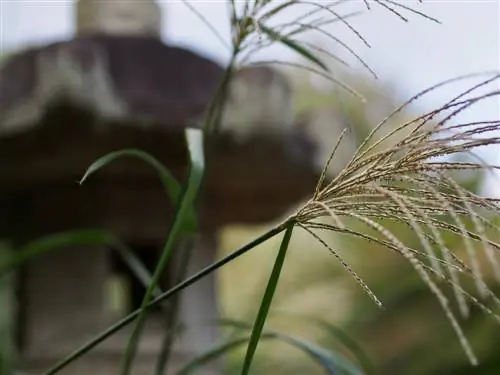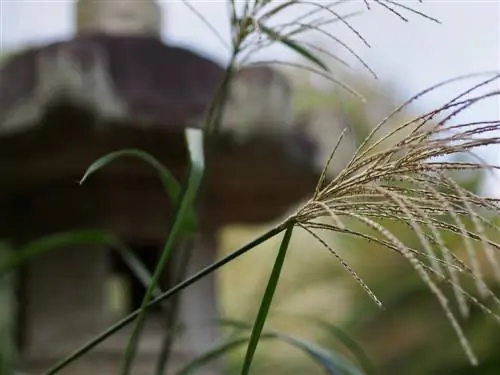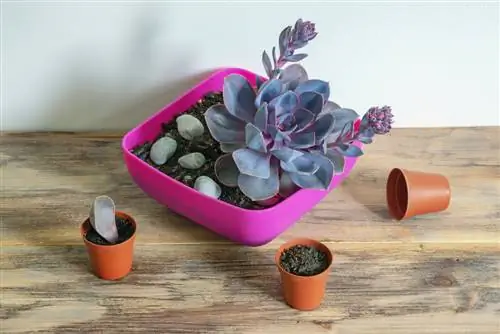- Author admin [email protected].
- Public 2023-12-16 16:46.
- Last modified 2025-01-23 11:22.
The leaves and stalks of miscanthus, swaying slightly in the wind, offer a sight that is both attractive and calming. No wonder that this ornamental grass now grows in many gardens. However, it is very fond of light and warmth.

How much sun does Miscanthus need?
There are different varieties of miscanthus (bot. Miscanthus sinensis) that have somewhat different requirements. What they all have in common, however, is their preference for a location that is as sunny as possible. Miscanthus probably doesn't bloom in the shade, and the plants there aren't as resilient and less vigorous.
If you want your miscanthus to bloom, then choose a flowering variety and plant it in a place that is as sunny as possible. Also make sure that the soil there is fresh to moist and that the miscanthus is well supplied with nutrients. Adequate fertilization is also recommended.
Some varieties of miscanthus tolerate light shade or partial shade quite well, although they may grow less lushly there. If you don't have a sunny spot in the garden, then use these varieties. Alternatively, there are numerous other ornamental grasses that thrive well to very well in the shade.
Miscanthus in winter
If your miscanthus doesn't get as much sunlight in winter, then that's not a problem. The above-ground parts of the plant die anyway. But don't cut the reeds back yet.
Many varieties have very attractive autumn colors, you shouldn't miss them. Pruning in spring is also a better solution for the well-being of the reeds. Ideally, you should wait until shortly before budding in April.
The most important things in brief:
- the more sun the better
- some varieties also thrive in partial shade
- rarely or never blooms in the shade
- Make sure you have a good supply of nutrients and water
Tip
If you want your miscanthus to produce flowers, then be sure to plant it in a sunny spot.






